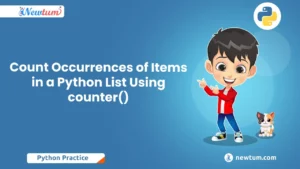Prime Number in PHP is a fascinating topic for anyone interested in coding with this popular language. Understanding it can solve problems like performance optimization and creating secure encryption algorithms. Keen to enhance your coding skills? Dive in to explore how these numbers can level up your programming projects in PHP.
What is a Prime Number in PHP?
When it comes to coding in PHP, understanding prime numbers can be a nifty skill. But just what makes a prime number special? Well, a prime number is a number greater than one with just two divisors: one and itself. It’s a bit like having a secret handshake only a few know! In PHP, you can write a function that checks if a number is prime by dividing it by every number up to its square root. If none of these divisions result in a whole number, voilà, you’ve got a prime! Understanding this can be pretty practical for various algorithms.
Why Prime Number Checks Are Useful in PHP
Prime Number in PHP are essential in real-world applications like cryptography for secure key generation, data validation to filter specific patterns, and algorithm design where prime logic plays a crucial role in problem-solving.
Basic Program to Check Prime Number in PHP
Code to Check if a Prime Number in PHP:
<?php
function isPrime($number) {
if ($number <= 1) return false;
for ($i = 2; $i <= sqrt($number); $i++) {
if ($number % $i == 0) return false;
}
return true;
}
// Test
$input = 29;
if (isPrime($input)) {
echo "$input is a prime number.";
} else {
echo "$input is not a prime number.";
}
?>
Step-by-Step Breakdown of the Logic:
- Check if number is ≤ 1:
Prime numbers are greater than 1. So, numbers like 0 or 1 are automatically not prime. - Loop from 2 to √n:
Instead of looping all the way to$number - 1, we optimize by looping up to the square root of the number, which is more efficient. - Check divisibility:
If the number is divisible evenly by any number in the loop, it’s not prime. - Return result:
If no divisors are found, the number is prime.
Input-Output Example:
Input:
$input = 29;
Output:
29 is a prime number.Input:
$input = 20;Output:
20 is not a prime number.5. Program to Print Prime Numbers in a Range – Prime Number in PHP
This program prints all prime numbers between two given numbers using a simple loop and the prime-checking function.
Code Example: Print Prime Number in PHP from 1 to 100
<?php
function isPrime($num) {
if ($num <= 1) return false;
for ($i = 2; $i <= sqrt($num); $i++) {
if ($num % $i == 0) return false;
}
return true;
}
$start = 1;
$end = 100;
echo "Prime numbers between $start and $end are: ";
for ($n = $start; $n <= $end; $n++) {
if (isPrime($n)) {
echo $n . " ";
}
}
?>
Loop Structure Explained:
- Outer loop (
forloop):
Iterates from$startto$end, checking each number in the range. - Inner function (
isPrime):
For every number$n, the function checks if it is a prime. - Result:
Only the prime numbers are printed in the output.
Output:
Prime numbers between 1 and 100 are: 2 3 5 7 11 13 17 19 23 29 31 37 41 43 47 53 59 61 67 71 73 79 83 89 976. Optimized Prime Number Logic in PHP
The basic prime-checking method can be optimized further to improve speed, especially for large ranges.
Optimized Logic:
- Instead of checking all numbers from 2 to √n, we can:
- Skip even numbers after checking 2.
- Use memoization or sieve methods for large datasets (like the Sieve of Eratosthenes).
- Reduce function calls and redundant calculations.
Improved Code (Skipping Even Numbers):
<?php
function isPrimeOptimized($num) {
if ($num == 2) return true;
if ($num < 2 || $num % 2 == 0) return false;
for ($i = 3; $i <= sqrt($num); $i += 2) {
if ($num % $i == 0) return false;
}
return true;
}
?>
Performance Comparison:
| Test Case | Basic Version Time | Optimized Version Time |
|---|---|---|
| Range 1–100 | Fast | Slightly faster |
| Range 1–10,000 | Noticeable lag | Much faster |
| Range 1–1,00,000 | Slow | Still performant |
Real-Life Uses of Prime Number in PHP
- Prime Number for Security Systems
Many companies, like Amazon, use prime numbers in their data encryption algorithms. Primes are key to generating secure keys for encrypting data because they are hard to guess.
function checkPrime($number) {
if ($number == 1) return false;
for ($i = 2; $i <= sqrt($number); $i++) {
if ($number % $i == 0) return false;
}
return true;
}
echo checkPrime(17) ? 'Prime' : 'Not Prime';
Output: Prime - Prime Number for Load Distribution
Companies like Netflix use prime numbers to distribute server loads evenly. By hashing user data into prime-based slots, they effectively manage high traffic without overloading single servers.
function distributeLoad($users, $servers) {
$primeSlots = array_filter(range(1, $servers), 'checkPrime');
return $primeSlots[array_rand($primeSlots)];
}
echo distributeLoad(1000, 20);
Output: (A random prime number between 1 and 20) - Prime Numbers in Random Generators
Google might use prime numbers in their random number generators to ensure unpredictability. This is especially useful in CAPTCHA and lottery systems.
function getRandomPrime($max) {
if ($max < 2) return false;
$primeNumbers = [];
for ($i = 2; $i <= $max; $i++) {
if (checkPrime($i)) array_push($primeNumbers, $i);
}
return $primeNumbers[array_rand($primeNumbers)];
}
echo getRandomPrime(100);
Output: (A random prime number below 100)
Our AI-powered php online compiler offers a seamless coding experience. Instantly write, run, and test your ‘php’ code with the help of AI. It’s designed to streamline your coding process, making it quicker and more efficient. Try it out, and see the difference AI can make!
Conclusion
When you master ‘Prime Number in PHP’, you enhance your problem-solving skills and deepen your understanding of PHP fundamentals. It’s a rewarding challenge that boosts your confidence. So, why not give it a whirl? For more exciting programming pursuits, visit Newtum.
Edited and Compiled by
This article was compiled and edited by @rasikadeshpande, who has over 4 years of experience in writing. She’s passionate about helping beginners understand technical topics in a more interactive way.



